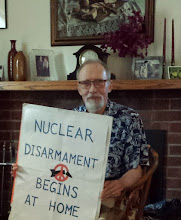Climate Restoration? Maybe, maybe not!
I recently read Climate Restoration: The Only Future That Will Sustain the Human Race, by Peter Fiekowsky (Rivertowns Books, 2022, 259 pages). The author's thinking about climate change and what it would take to reverse it impresses me with its breadth and depth. He cites an armamentarium of technologies that can be deployed to task, but fails to include the one that I consider most critical for assuring success.
The prevailing public understanding of climate change is
that it can be stopped by reducing carbon dioxide (CO2) and other
greenhouse gas emissions to their pre-industrial levels by mid-century. Peter
Fiekowsky explodes
that popular myth by casting emissions reduction as “Job 1” in a much more
ambitious but necessary program to save civilization and bring long-term
stability to the biosphere. Stopping at Job 1 does nothing to halt the warming
baked in by past emissions, reverse ocean acidification, sequester carbon emitted
in the past, or prevent catastrophic methane bursts from thawing permafrost in
the
- Synthesizing limestone from CO2 for building materials.
- Sequestering CO2 in the seafloor by (1) expanding kelp forests and (2) sprinkling tiny amounts of iron to trigger phytoplankton blooms. Both programs would also enhance marine biodiversity.
- Enhancing atmospheric methane oxidation to suppress methane spikes.
Finally, Fiekowsky outlines a plan to bring global population down to 2 billion people before the end of the century, because the demand of today’s 8 billion people on Earth’s resources makes climate restoration impossible. I agree that reducing the human population may be necessary, but not nearly as drastically as he envisions.
What I find rather unfortunate is Fiekowsky's deference to Mark Jacobson, who claims that the energy sector can be decarbonized with renewable sources alone. When scientists criticized Jacobson's assumptions1, he chose to sue them rather than defend his assumptions. That is the action of a propagandist for the fossil fuel industry, not an independent scientist. Renewables are the industry’s favorite zero-carbon sources because they are intermittent. When their output is down, wind and solar farms must burn fossil fuels to provide base load power. While batteries can store renewable energy to smooth their output, their capacity is woefully inadequate to liberate renewables from dependence on base load sources (fossil fuels and/or nuclear).
Jacobson is cited frequently by proponents of renewable energy who believe that nuclear power isn’t needed to decarbonize the energy sector. Most experts in energy and the environment disagree, and regard that belief as dangerous thinking. Climatologist James Hansen, for example, has argued since 2009 for ramping up nuclear power, and has been frustrated by antinuclear activists who have shut down nuclear power plants. In 2017 he said, "We cannot remain silent. If we sit back and say that in a few decades’ time it will become clear that phasing out fossil fuels will not succeed without nuclear power, we will be right, but by then, it will be too late! ... The opposition to nuclear power is truly insane. All these fears – about radiation, about waste, about accidents – have no basis in science. This aversion is quasi-religious and irrational." 2
Fiekowsky’s claim that a global population of no more than about 2 billion people can be sustained indefinitely on 100% renewable energy is probably right. Paul Ehrlich and Lester Brown came to similar conclusions long before him. The limit comes from the diluteness of solar radiation at Earth’s surface, just 100 watts per square meter. Sun and wind are free, but collecting their energy takes a huge mass of materials spread over vast areas. Nuclear energy is so much denser that nuclear plants require only 1/18th the mass of solar farms and 1/11th the mass of wind farms, for the same energy output. On a given parcel of real estate, a nuclear plant would generate 37 times as much energy as a solar farm, and 132 times as much as a wind farm. These facts make nuclear the most environmentally benign energy source. If Fiekowsky had included lots of nuclear power in his calculation, he would have estimated a much higher sustainable population limit.
I rate the book Climate Restoration Four Stars. Reading it raised my confidence that we can save civilization and restore the health of the biosphere on which it depends, by deploying technologies at our disposal today. The chapters on drawing down greenhouse gases to pre-industrial levels, preventing catastrophic methane bursts, and stabilizing the population to a long-term sustainable level, provide ideas and insights I had not encountered elsewhere in the climate change literature. I would have rated the book Five Stars if the chapter “Job One: Completing the Energy Transition” had included nuclear power, and the chapter “Population Restoration” had shown how the sustainable population limit increases with the percentage of nuclear in the energy mix.
I hope a future edition of Climate Restoration includes a chapter on the long-term consequences of restoring the climate to its pre-industrial composition. Temperature drops that have led to ice ages were not precipitated by atmospheric changes in CO2 concentration, as Fiekowsky asserts, but by long-term variations in Earth’s orbit and axial tilt (Milankovitch cycles). For this reason, people before 1980 were more worried about global cooling and the next ice age, than about global warming. If CO2 levels are reduced to 300 ppm by 2100, the Milankovitch cycles will again dominate temperature trends, leading to an ice age in about 50,000 years.3
But industries profiting handsomely from sequestering carbon over the next half century may want to keep going after they’ve outlived their usefulness and could become self-perpetuating “cash cows” (like today’s fossil fuel industries). If they cannot be stopped and reduce CO2 concentrations below 250 ppm, they could trigger the next ice age much more quickly. I’d be interested in reading how Fiekowsky deals with this prospect.
References. If a link fails, copy it and paste to web browser.
3...https://en.wikipedia.org/wiki/Milankovitch_cycles#Present_and_future_conditions.


0 Comments:
Post a Comment
<< Home